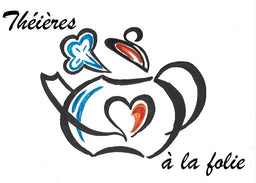Summary :
The most common size is 250-330ml.
Compared to the usual size of Chinese teapots, Japanese teapots modern ones are larger. You can brew any type of tea, such as green tea, white tea, Oolong tea, black tea, Pu-er tea, or herbal tea.
Red clay and purple clay unglazed teapots are traditional and most popular among the Japanese until recent years.
There are also porcelain, ceramic and copper side handle teapots. We notice that most of the teapots made by hand in Japan have a side handle, this famous Yokote
Small difficulty for left-handers to use this side handle teapot - it is designed to be held with the right hand.
- Without handle, with filter inside. This type of teapot is called Houhin in Japanese.
Houhins are generally small in size, mostly 80-160ml. They are designed to brew premium Gyokuro and green tea. It's about enjoying a deeply concentrated tea in small amounts, sometimes just a few drops.
The opening of the Houhin is larger, (intended for superior tea), so you can observe and enjoy the tea leaves in the teapot.
you can also enjoy the color, shape, sweetness and aroma of the tea leaves before and after steeping.
These tea leaves require low water temperature 60-70℃ for brewing, sometimes even much lower. This means that the teapot should not be too hot to hold even without a handle.
Some Houhins have small supports like ears, if you hold well with your fingers on the supports, high temperature water can do as well, it means any kind of tea leaves can be steeped.
Porcelain teapots are more common than other types of teapots. Remember the heat conductivity of porcelain is higher - For Gyokuro it's 50-65℃, otherwise only put less than half the water in it, in case your tea leaf requires a high water temperature.
- Teapot without handle and without Shoboridashi filter

It looks like Houhin, but without a filter.
Without handle, without filter inside. This type of teapot is called Shiboridashi in Japanese. It is also designed for brewing Gyokuro and premium green tea, which low temperature water is used for brewing.
Hand-rolled tea leaves (Temomicha) are shaped like a long needle. Shiboridashi is often used to dip it. The wide mouth of the container is suitable for the long shape of the tea leaves.
Houhin and Shinoridashi, are used to taste small quantities of green tea, generally less than 20ml for one person with small cups - This is the traditional Japanese infusion.
The Shiboridashi is not very widespread, it is a special teapot, even for the Japanese. Thus, few Japanese know the name and how to use it, unless they are tea lovers.
Ushirod Kyusu Back Handle Teapot
In Japan, there are few "handmade" back-handled teapots, if not small ones.
Most back-handled teapots are larger (250-400ml) and often made by casting. These larger teapots are not called "kyusu", but "teapot" if they do not have the traditional shape of Japanese teapots.
Smaller teapots (130-200ml), handcrafted and fitted with a rear handle, are generally used for steeping tea to take advantage of the essence of tea leaves, often chosen by tea lovers.
The "large teapot" is used to infuse tea for everyday consumption, for example to quench thirst, to accompany a meal or sweets.
- Uwate Kyusu Top Handle Teapot
Top-handle teapots were very common a few decades ago in Japan. The material of the handle can be rattan, bamboo, metal, or the same material as its container.
Large upper cove (Dobin)
She often gives her name to this type of teapot.
Large capacity (at least about more than 400ml usually, around 1000ml-2000ml)
- Ceramic or porcelain.
Dobin's function is:
1. Brew tea (like the teapot).
2. Prepare medicinal herbs or Mugicha (barley tea) by boiling them (putting them on fire).
Those made of ceramic and porcelain are also called bofura in Japanese. Charcoal is used to boil water, but due to a restriction of the use of fire indoors in public places, especially in tea ceremony halls, the electric stove is used at the place.
The electric model makes it easier to control the boiling time of the water (the official tea ceremony usually takes place at a fixed time).


